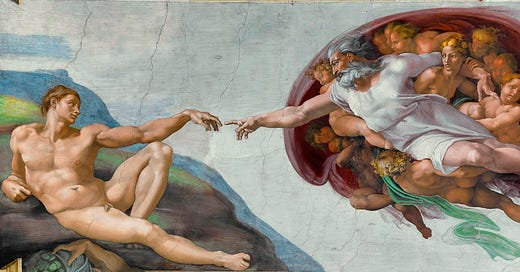The Origin of the World
Many believe the origin of the world stems from God.
Others believe it originated from evolution or science.
No matter the origin of the world, before humankind, who could tell of its origin? Animal knowledge is mostly evolutionary and not explanatory.
It takes an intelligent being to do so, and that’s precisely what Gustave Courbet suggested when he painted “The Origin of the World” or “L’Origine du monde” in 1866.
He depicts the origin of the world as a close-up view of a woman’s vulva because that is where every human’s world began and wherein the interpretation of the world began as well.
In some sense, it’s a jarring painting, but, in reality, it is commonplace (to a least fifty percent of the population).
Yet, if it weren’t for the title, “The Origin of the World,” would the painting have a different meaning? It might be interpreted as crude rather than philosophical.
Some 350 years earlier, Michelangelo painted the “Creation of Adam” on the Sistine Chapel’s ceiling.
Adam’s arm is outstretched, and the tip of his finger is nearly touching God’s hand.
God is surrounded by a uterus, which some interpret as God being a womb for society. But Courbet, more matter-of-fact, suggests women are the womb for society.
The womb is where every human, family, and community originated.
It is also where the notion of the world originated and the idea of God as well.
Ironically, humans have been searching for the origin of the world since the beginning of our existence. Yet literally speaking, the origin of the world is all around us, standing next to each man.
So, the next time you want to be thankful for the origin of the world, give your mother a hug!
Photo of: L'Origine du monde ("The Origin of the World") — ** Explicit content. Not safe for work.



